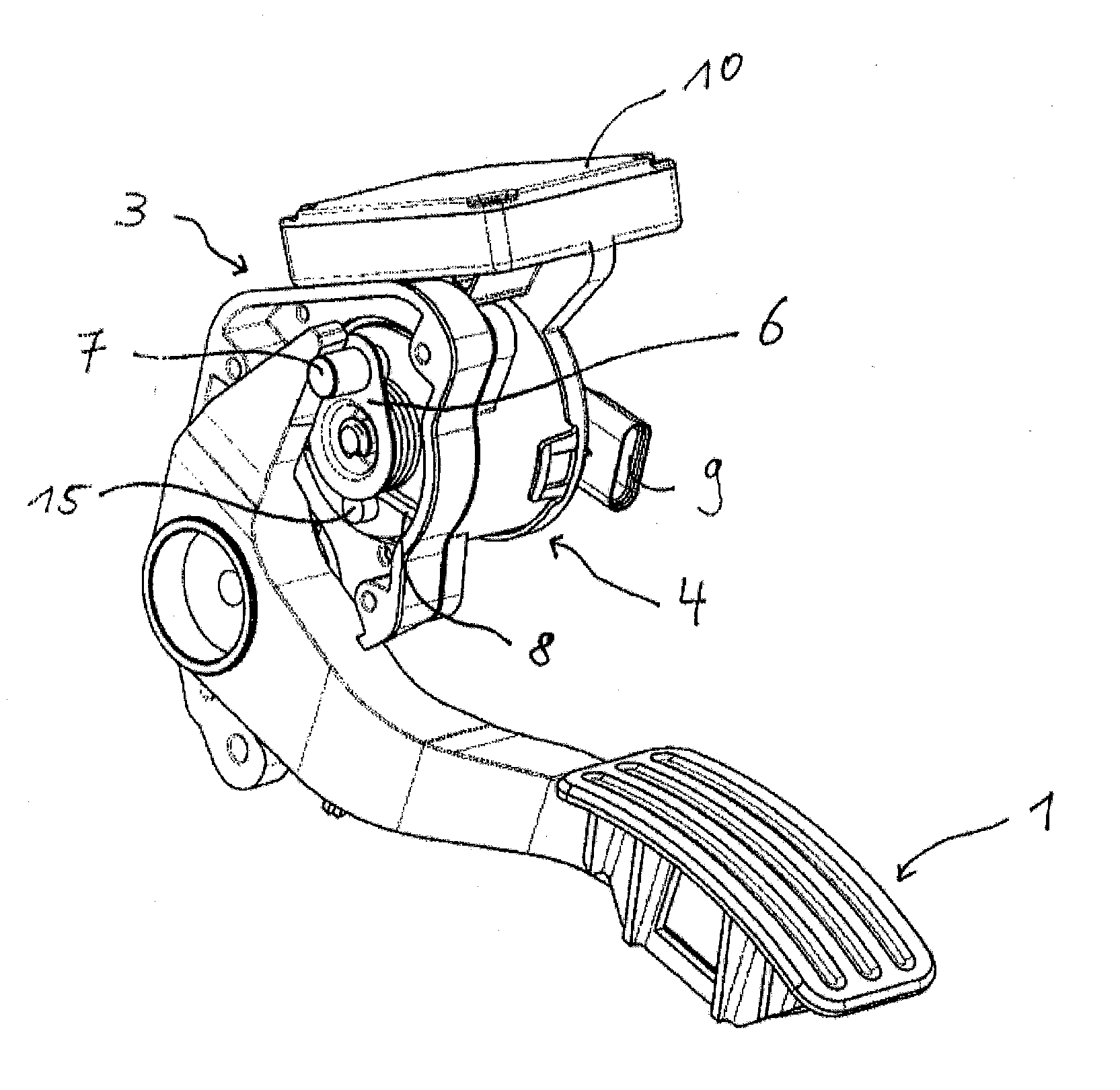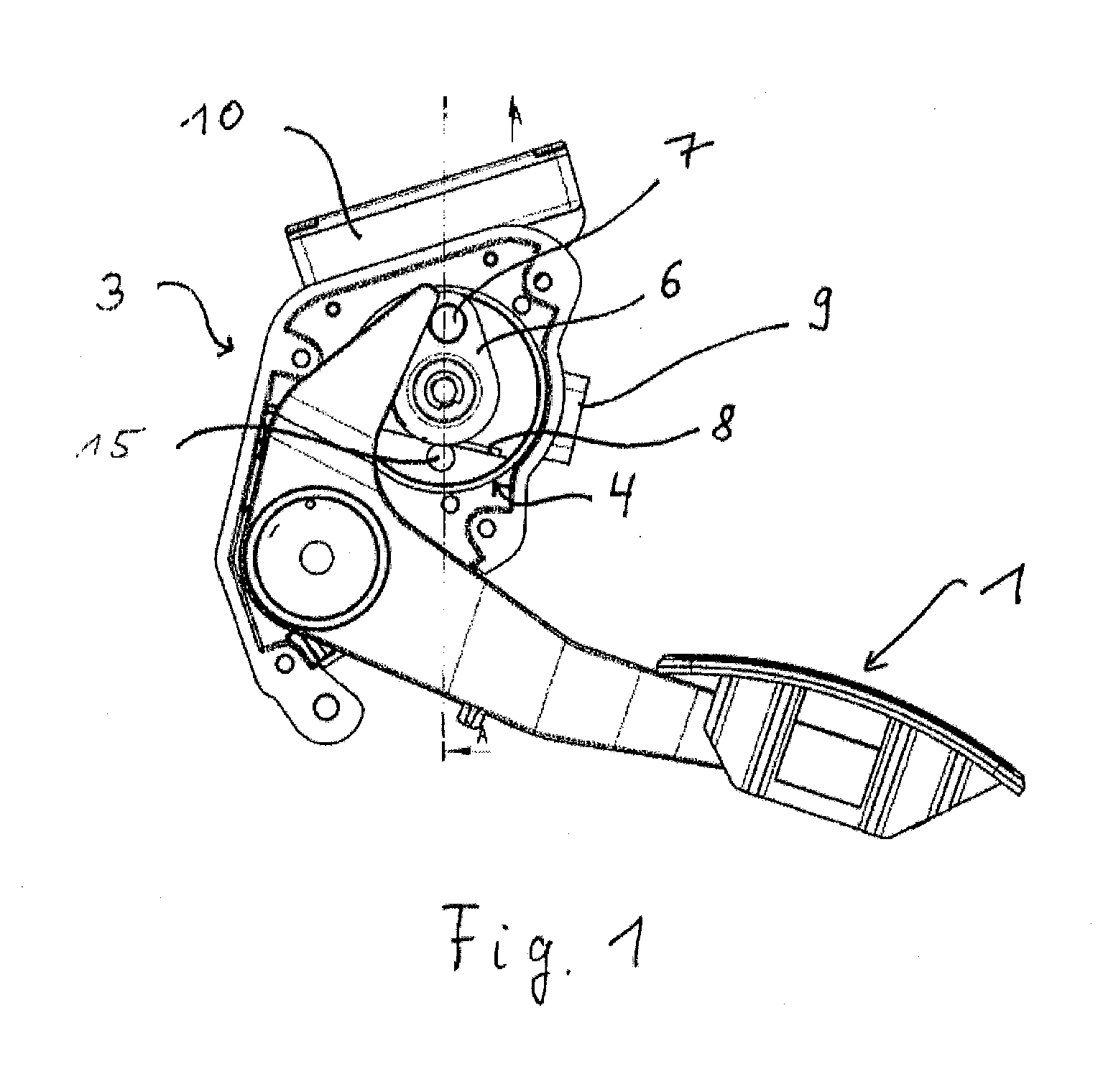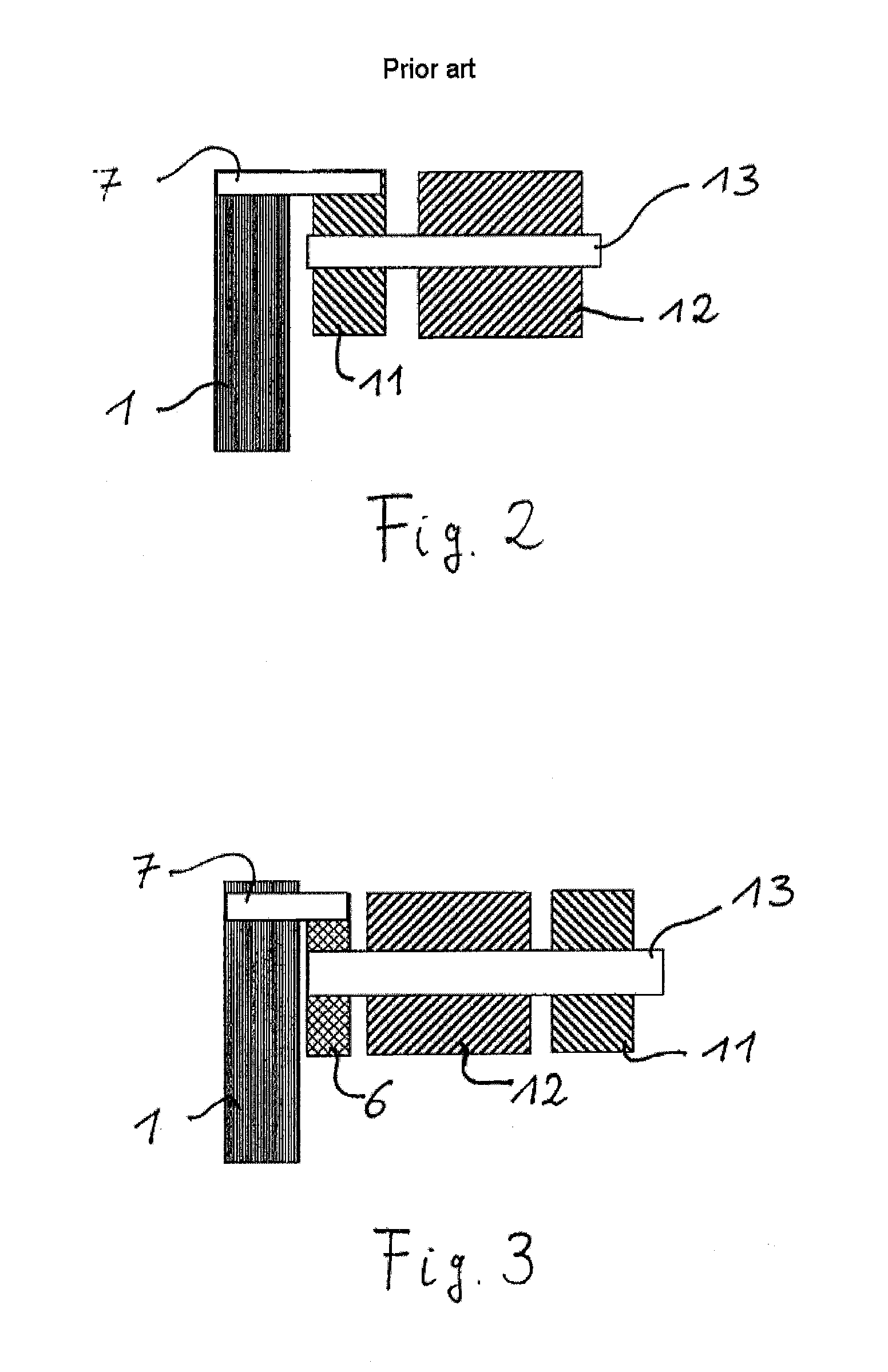Compact pedal system for a motor vehicle
a pedal system and motor vehicle technology, applied in the direction of mechanical control devices, limiting/preventing/returning movement of parts, controlling members, etc., can solve the problems of relatively large bending torque acting directly on the rotor shaft, changing the air gap between the stator and the rotor, and high manufacturing and calibration costs. achieve the effect of increasing the for
- Summary
- Abstract
- Description
- Claims
- Application Information
AI Technical Summary
Benefits of technology
Problems solved by technology
Method used
Image
Examples
Embodiment Construction
[0028]FIG. 1 shows a compact pedal system for regulating the speed, wherein a force resetting device is integrated into the housing 3. The pedal system comprises essentially a pedal lever 1 for converting the driver's request into speed. An electric motor 4, in particular a torque motor, as a further component of the force resetting device can, in the de-energized state, apply a resetting force to the pedal lever 1 in the direction of reducing the speed. At the electric motor 4, a drive pulley 6 is rotatably arranged, which drive pulley 6 can apply the resetting force to the pedal lever 1 by means of a drive roller 7 or other suitable devices such as, for example, sliding free-form faces. A control unit 10 for controlling the electric motor 4 is also integrated into the housing 3.
[0029]The electric motor 4 comprises essentially a stator 12 and a rotor 11 which is connected to a shaft 13 which can rotate in the stator 12. FIGS. 2 and 3 each show a basic arrangement of the components ...
PUM
 Login to View More
Login to View More Abstract
Description
Claims
Application Information
 Login to View More
Login to View More - R&D
- Intellectual Property
- Life Sciences
- Materials
- Tech Scout
- Unparalleled Data Quality
- Higher Quality Content
- 60% Fewer Hallucinations
Browse by: Latest US Patents, China's latest patents, Technical Efficacy Thesaurus, Application Domain, Technology Topic, Popular Technical Reports.
© 2025 PatSnap. All rights reserved.Legal|Privacy policy|Modern Slavery Act Transparency Statement|Sitemap|About US| Contact US: help@patsnap.com



